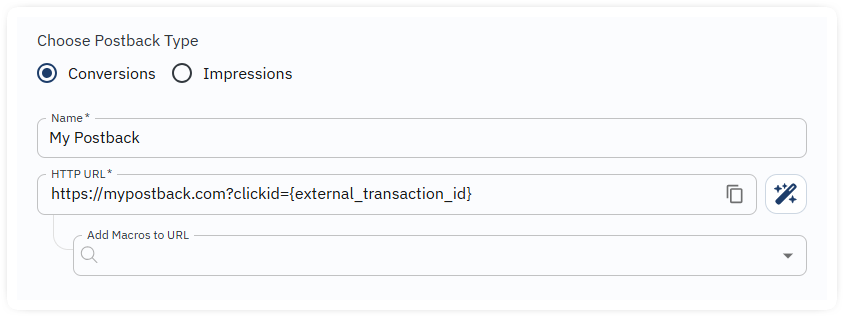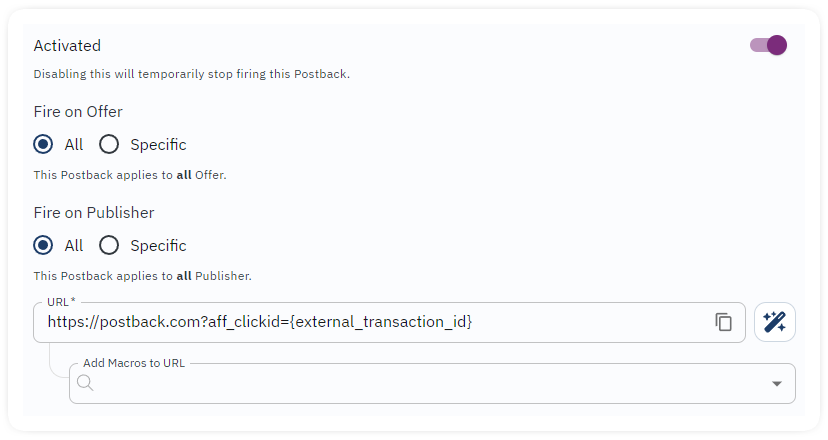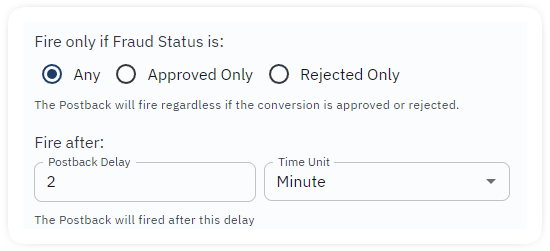¶ Affiliater Postback Setup
The affiliate postback setup is critical for syncing conversion data with your affiliate partners or external platforms. This guide walks you through how to configure postbacks in 24Metrics, covering URL setup, firing rules, and advanced options like delay and rejection filters, so you can ensure accurate and timely conversion reporting.
¶ Setup Steps

- Open the Postbacks section from the main menu.
- Click + Create (by default, “Conversion” is pre-selected)
- Name your postback and decide: apply it to all offers/publishers or select specific ones.
- Enter your target URL and map the parameters.
Note: Always include the affiliate’s CLICKID. 24Metrics recommends using the dedicated parameter
external_transaction_idfor consistency.
¶ URL Mapping

24Metrics supports two types of affiliate postbacks:
- Impression
- Conversion
Each can be mapped with a flexible set of parameters, including {status}, {rejection_reason}, {external_transaction_id}, and others. These macros dynamically insert values when the postback fires.
Important:
The affiliate postback should include the its unique conversion identifier, usually aclickid.
You can use for example&external_transaction_id=AFFILI_CLICKID, to send conversions to 24Metrics and then include this values into Postback Manager.
Essential fields:
clickid(or its alias)- Optional macros like
{status},{rejection_reason},{external_transaction_id}
Example format:
Affiliate Postback Setup Example:
https://affiliate-postback.com/?clickid={external_transaction_id}
You can append more parameters (e.g., payout, status, or rejection reason) using the Add MACROS to URL field in the postback setup. Always double-check with your affiliate what macro format they expect.
¶ Firing Conditions

Choose when the postback fires:
- On any conversion (both approved and rejected)
- Only on approved conversions (recommended)
- Only on rejected conversions
¶ Fire by Rejection Reason

When firing on rejected conversions, you can further filter by specific rejection reasons, ensuring only relevant cases trigger the postback.
¶ Delay Options

Add a delay before the postback fires to wait for external fraud-check systems (e.g., Appsflyer or internal screening). Set delays in seconds, minutes, or hours. By defalut, the Minimum delay is 2 minutes.